How does someone relive life’s most awkward moments while maintaining a sense of humor about them? Ask Canadian filmmaker Damien Ferland, who as the star and creator of his first-person web series Hyper-Distracted and the pandemic-centered Hyper-Distancing remembers his own weird experiences in a genuinely absurdist style that connects with audiences while possessing the same surreal qualities of shows like Larry David’s Curb Your Enthusiasm, Netflix’s I Think You Should Leave with Tim Robinson and the recent HBO breakout How To with John Wilson.
Filmed directly in front of the same Winnipeg, Manitoba spots where Ferland experienced his bizarre encounters with over-demanding actors, co-workers, classmates and friends, Hyper-Distracted is both a humbling trip down memory lane and a humorous coping mechanism for Ferland. His wacky stories range from adolescent catastrophes – both at home and in the classroom – to his humiliating mishaps in the many jobs he’s been hired (and fired) from.
Complementing Hyper-Distracted is its spinoff series Hyper-Distancing, a project that began on the same day that Canada was placed on a nationwide lock-down due to the spread of COVID-19. Challenged by the same physical isolation and solitude felt by many of his fellow citizens, Ferland created a new series of funny, observational commentaries on the rare highs and common lows of life under quarantine in Hyper-Distancing with the same interpersonal, “fourth wall” breaking approach he originated in Hyper-Distracted.

Damien Ferland, star and creator of HYPER-DISTRACTED and its pandemic-set spinoff HYPER-DISTANCING. Photo courtesy Ryan McBride.
Not everyone has begged their parents to let them watch a horror movie only to have it be made even scarier by a malfunctioning (and now-obsolete) home video format (episode 5, “The Exorcist”), nor have they had to pledge allegiance to a humongous American media conglomerate during job orientation at a movie theater owned by said humongous American media conglomerate (episode 1, “High School Jobs”), nor have they had to make an impossible errand run while working on an indie film crew (episode 12, “The Film Set”).
Yet, Ferland’s humorous and vivid re-tellings of those unusual life experiences will hopefully make viewers feel better about their own past pitfalls – just as making both Hyper-Distracted and Hyper-Distancing has for Ferland, who recently talked about the two shows with Snobby Robot.
Chris Hadley: What (and/or who) inspired you to create both shows, and how did you develop the concepts for them?
Damien Ferland (star/creator, Hyper-Distracted and Hyper-Distancing): It took an absurdly long time. When I made a music video for my friend Julia (Ryckman’s solo music) project Slattern in 2010, she suggested that I make a web series instead of anxiously wanting to make a feature-length film. The idea, unfortunately, did not appeal to me, as I was too intensely determined!
Around the same time I made a short film for a 90-second film contest about places where I have been fired called Resume, which was made in a similar style to Hyper-Distracted. A production manager found it interesting enough to hire me to work on a feature film directed by (legendary Canadian filmmaker) Guy Maddin, which was weird because she had multiple reasons not to approach me!
I ended up getting a production coordinator job, which ended badly, but the experience inspired the best episode of Hyper-Distracted (the show’s twelfth, titled “The Film Set”). Over many years I wrote a script based on my own experiences, anchored by the feature film experience.
The problem was that I gave the story a timeline of a mere two months! The script never worked because all of these moments took place throughout my life, and they had little to nothing to do with each other. Because of trying to place everything into a more traditional structure, I could never work in those necessary peripheral details that enhance any individual story because it would make this script ramble. The table read of the last draft is a memory I’d love to lose!
Leap forward to July 2016. I was hanging out with filmmaker friends at a festival here in Manitoba, and I was talking to them about my script troubles. My friend Mylène suggested, “why don’t you tell the stories yourself?” My friend Ryan, who usually writes his own scripts with many characters, said to the effect of, “more actors would only slow down what you are trying to do, (and) only you are necessary for this.” Of course!
The sense of humor in my show is about how I felt at those awkward moments and what was going through my head. I remembered what Julia said about making a web series, and it all made perfect sense to speak directly to the camera at all of the locations where my experiences took place. As long as it is supportive and understanding of your vision, feedback from artists of different disciplines is important.
For Hyper-Distancing, I figured that starting a video journal about my first-person experiences during the pandemic could be interesting. What does someone do to pass the time while they wait for something as massively disrupting like a pandemic to take its course?

Photo courtesy Ryan McBride.
CH: In what ways have your own experiences as a filmmaker influenced the idea for both Hyper-Distracted and Hyper-Distancing?
DF: A lot of the stories in Hyper-Distracted have to do with my misadventures on film sets due to my inability to fit in with the work culture of sets. I learned that working on sets and making your own independent projects is next to impossible, and so I chose to make my own films. It’s only until recently that I took a media manager job for a TV production company, and it was because I knew that they were not a pack of sarcastic stress cases!
CH: What led you to come up with the idea of appearing on camera to tell your stories of “hyper-distraction” and “hyper-distancing”, and was there any one person/series that influenced your stylistic approach to your on-camera appearances?
DF: Watching films made by the underground filmmaker brothers George and Mike Kuchar motivated me to put myself in my own projects. They’re so extreme and so camp, yet they are the most blatantly personal films I’ve seen. George Kuchar’s Weather Diaries are largely of himself waiting for extreme weather in his motel room, and the strange things he decided to film in his spare time.
It’s not on everyone’s wavelength, as he isn’t afraid to show long stretches of his boredom and loneliness in those films, but attempting to make something that hinges on only having you in virtually every scene requires an exciting level of risk for a filmmaker. That said, I can’t go as far as George and simply show a full frontal shot of me walking out of a steamy shower for no particular reason. Sorry.
Curb Your Enthusiasm has been influential to countless writers, but how Larry David uses himself as a conduit for approaching extremely uncomfortable situations helped me laugh at all of my own cringe-worthy moments that ended up in Hyper-Distracted. How he acts out ignorant behavior that he must have witnessed in real life encourages me to include my real life mistakes in my stories, and to play up my mischievous side when telling them. I think that I would be a less content person if it weren’t for that show.
CH: You filmed each episode of Hyper-Distracted in and around Winnipeg, Manitoba. Besides boosting the authenticity of the stories you tell on each episode, how does that location, plus the unique qualities and quirks of the city, and the places you appear in during each episode, add to the effectiveness of the show itself?
DF: Everyone has places that they encounter on a day-to-day basis that will remind them of something that once happened at those locations, and I’m sure that it resonates on a subconscious level, as well. When developing Hyper-Distracted I figured that my many relationships with the exact locations where my stories took place would add to my performances. It’s kind of funny to me that I am interacting with these buildings that are indifferent to my struggles that once took place in front or inside of them.

Damien Ferland (center). Photo courtesy Ryan McBride.
CH: Of all the stories you’ve recounted in Hyper-Distracted and Hyper-Distancing, which one was the most memorable to tell on camera?
DF: The time when I worked on the Guy Maddin set (was the most memorable story I told on camera). The actor Udo Kier is just as energetic and bizarre as his performances. I’d like to think that he could tell that I was stressed out on that set, and in his own distinct way, tried to get me to snap out of my exasperation by yelling at me. I really never did see him again after what happened at the steak house.
CH: Did telling these stories help you feel better about the weird moments you found yourself caught up in?
DF: The repeated happy ending to all of these weird moments is making the episode itself! Turning negative experiences into positive ones by making comedy out of them is therapeutic. I learned to only stick to my own experiences after attempting to conclude a story with someone else’s own terrible and very public moment.
She brought in some guy to a video art co-op (of which I am a member) to show him a project that she was working on. They found themselves fooling around in the bathroom down the hall, where the sink collapsed underneath her weight. This caused $30,000 of water damage to the Artspace building. Although she was laying low after this happened, we were working with the same people.
I neglected to erase my sound files off of a mutual friend’s Zoom recorder before she used it. She eventually heard my voice on one of the files, and decided to listen to my audio, where she eventually heard her own story. When she confronted me about it, I didn’t think she would care because I didn’t use her name, but apparently I crossed a line.
I opted to tell my own awkward story for the “Toxic Friendship” episode (the eleventh episode of Hyper-Distracted). Yes, it turned out much better, and proved to be more cathartic. So there! I don’t feel bad for what I attempted, because she refused to pay the $1,500 deductible.
CH: The COVID-19 pandemic, and the ensuing lock-down that came as a result of it, led to you creating Hyper-Distancing. What were some of the biggest adjustments you had to make in your filmmaking process during the lockdown, what were some of the biggest challenges you faced as a result of working during the pandemic, and how were you able to meet those challenges?
DF: There are moments where I have to catch a spontaneous moment, but when I am telling a story, I have the time to film three takes. The limitations I face with Hyper-Distancing is what gives the program its character. In fact, using my smartphone to film everything is liberating. I try my best otherwise, but it can look and sound rough. That said, it’s a diary mostly made up of unrehearsed moments. I think that the handheld image and just a bit of wind noise (to go with it) is right at home with this project.
CH: Are there any further episodes of both Hyper-Distancing and Hyper-Distracted in the works, and do you plan on resuming production of Hyper-Distracted once the COVID-19 situation improves?
DF: Hyper-Distancing is entirely dependent on what is happening day-by-day. It’s a video diary through and through. I want to keep making it for a while longer, until I am vaccinated! I would like to resume production of Hyper-Distracted in the future, but I feel like I have gone through all of the stories that I could tell. We’ll see. I have one idea for a series that I really like, but I have to sit down and work on it.

Photo courtesy Ryan McBride.
CH: In terms of audiences and the kind of surrealist humor found on both shows, who do you think would like to watch them, and are there any similar shows you’d compare it to (if any)?
DF: I honestly have no clue. As far as I know, I am making the show for my friends, one of whom said that he wasn’t sure if he would like it as much if he didn’t know me (it didn’t sound mean when he said it). I should follow up with Stareable Fest and see what they think!
My jaw dropped when I came across How To with John Wilson. When I saw the thumbnail poster of him filming a spilled cup of coffee while looking through on-demand TV shows one night, I immediately had to watch the first episode. Hyper-Distancing involves me showing the strange things I find when I am out and about as well as at home. They are different programs, but I can’t help but notice a little bit of kinship between the two.
It’s interesting that you say that my humor is surrealist. I know that my humor hinges on my subjective viewpoint. I gravitate to surreal TV and film. I love TV shows like Pee-wee’s Playhouse, Mary Hartman Mary Hartman, Twin Peaks, I’m Alan Partridge, Strangers with Candy, Absolutely Fabulous, SCTV, Kids in the Hall, and of course Curb Your Enthusiasm. Do whatever you can to watch Vaktaserian from Iceland, starring the former mayor of Reykjavik (Jon Gnarr) where he plays the Leninist manager of a Shell station who terrorizes his staff and customers.
CH: What do you hope people take away from watching both shows?
DF: I hope that people take away the idea that there are so many strange things, occurrences, and behaviors that we come across in our day to day lives and they’re worth wondering about. Maybe someone will perhaps feel understood by either show on some emotional level. It would be interesting to see that happen.
NOTE: Ferland hopes to add closed-captioning to Hyper-Distracted and Hyper-Distancing at some point in the future.
See all episodes of Hyper-Distracted and Hyper-Distancing on YouTube:
https://youtube.com/channel/UCyxb7dCOxG1_9cTzhShJAhA
Find out more about both shows on Facebook:

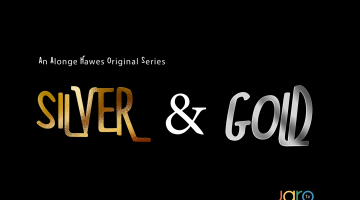

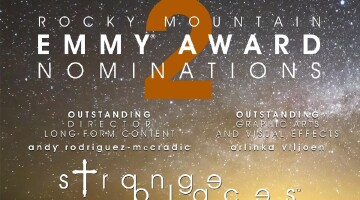
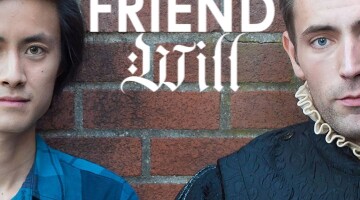
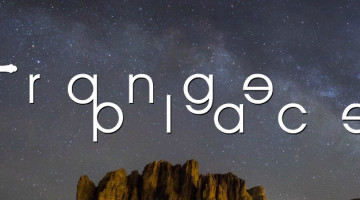
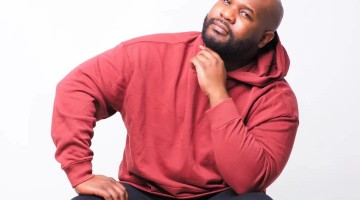
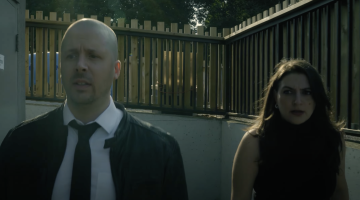
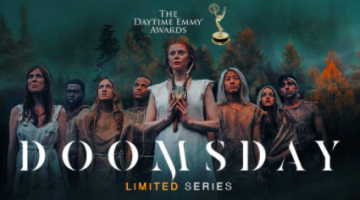

No Comment